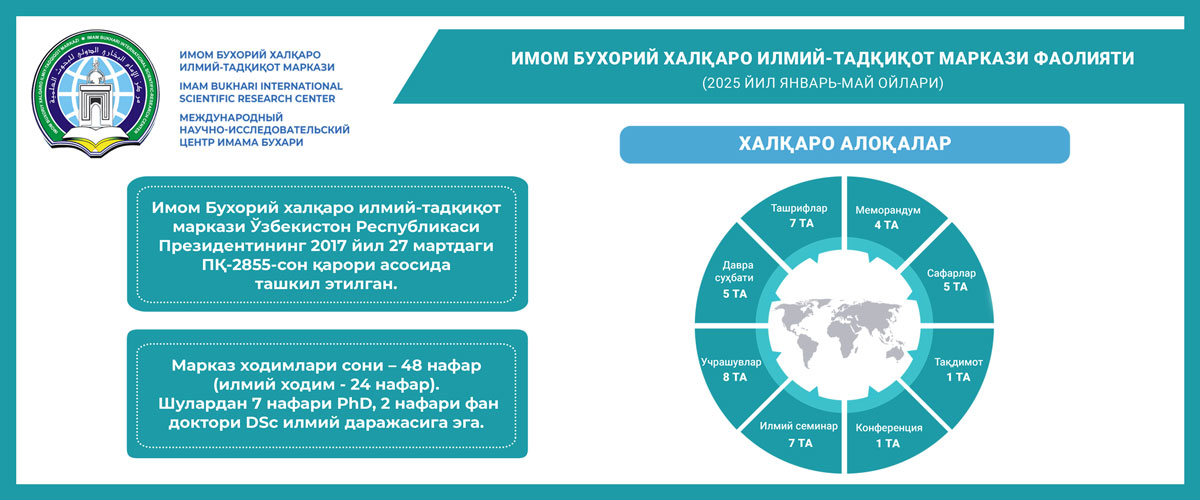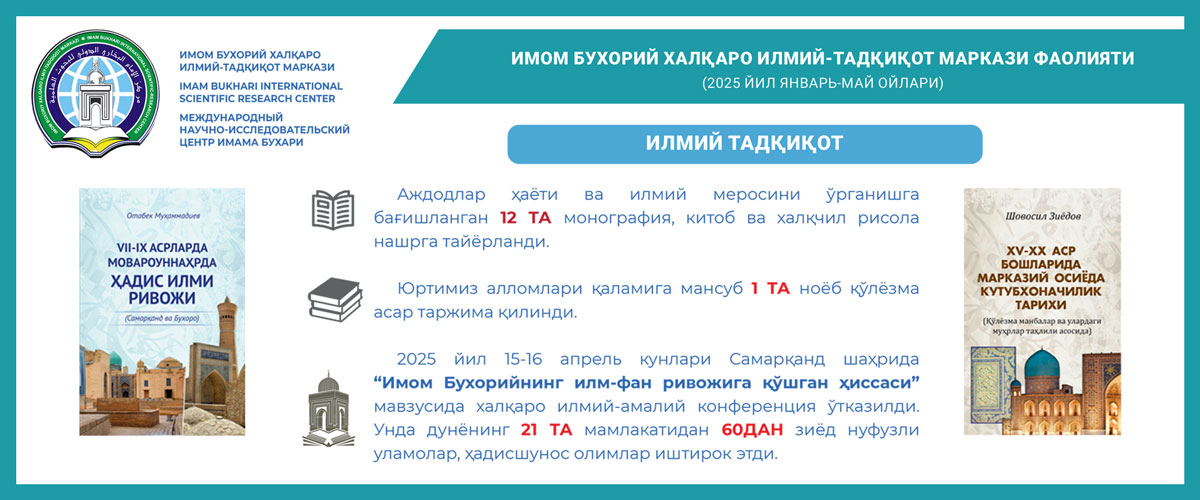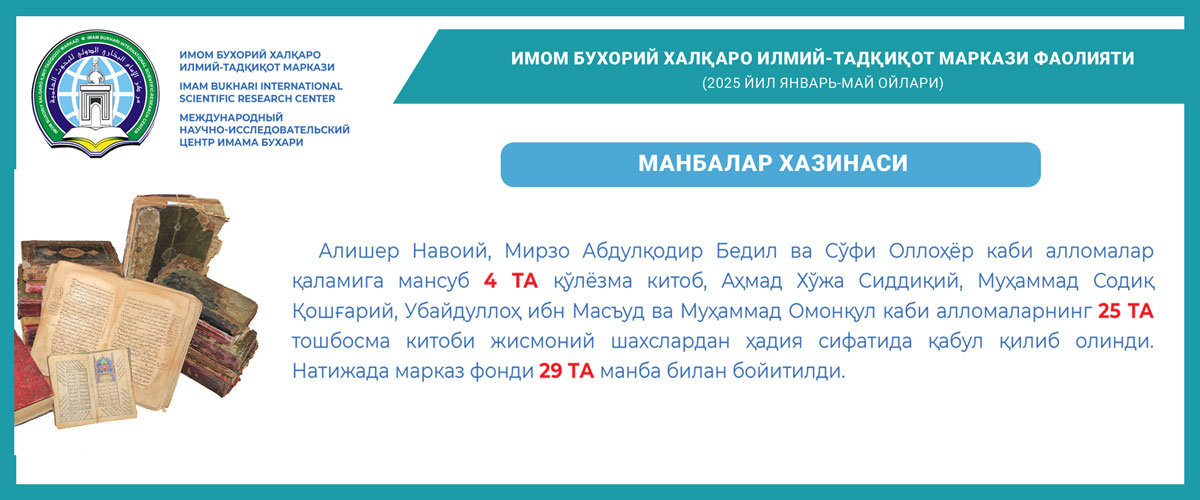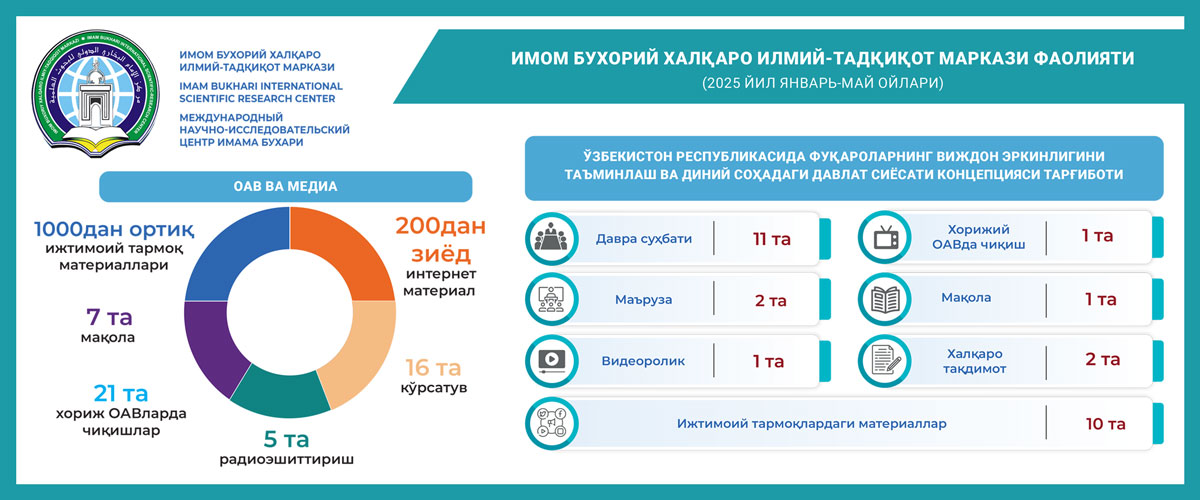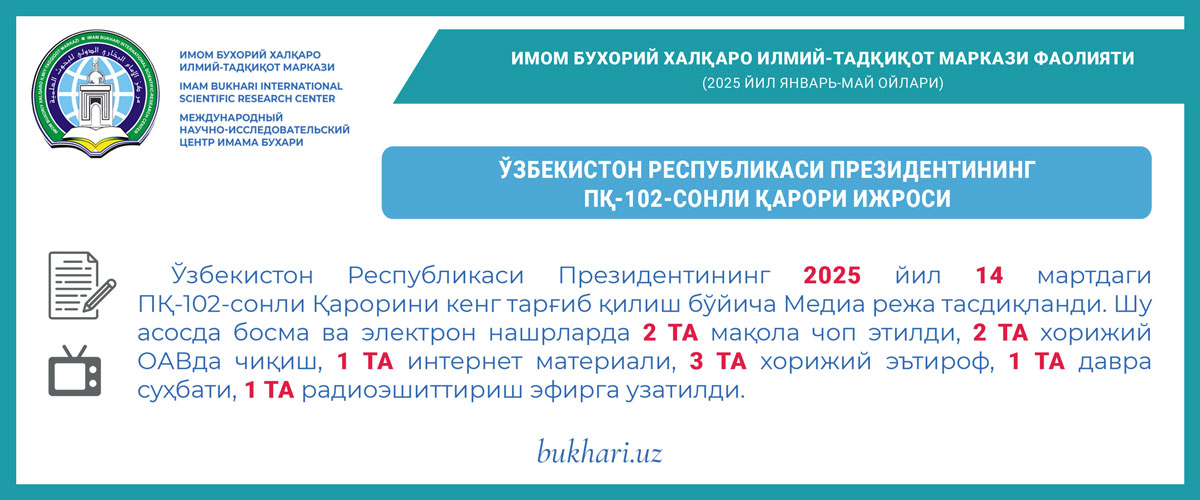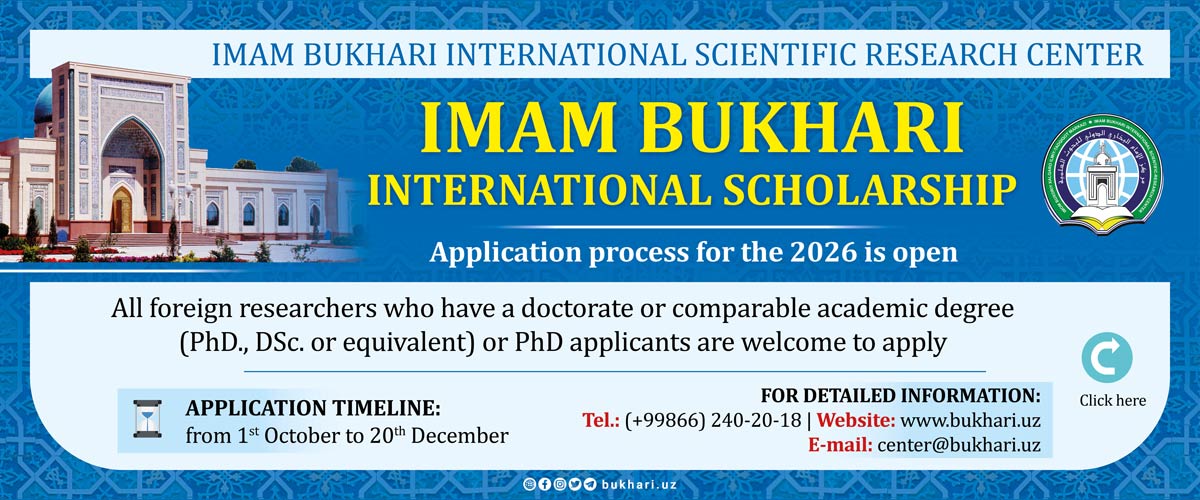One of the experts in the science of Hadiths and law who lived in the 9th-10th centuries (the 3rd and 4th centuries A.H.) was a lawyer Abdullah ibn Muhammad as-Subazmuni. His full name was Abdullah ibn Muhammad ibn Ya’qub ibn al-Haris ibn al-Khalil al-Ustaz al-Imam al-Hafiz al-Faqih as-Subazmuni al-Harisi al-Kalabazi. Lots of information about this scholar is preserved in a number of historical sources and there is no difference in the spelling of his name in them.
Abdullah ibn Muhammad as-Subazmuni was born in the village called Subazmun, which was situated in a distance of a half farsakh (1.5 kilometres) from Bukhara. In his book “Al-Qand fi zikr ulamai Samarqand”, Najmiddin Umar an-Nasafi mentioned that Abdullah ibn Muhammad as-Subazmuni was born on Wednesday of the month Rabi’ al-akhir, 258/872. His penname “Subazmun” was used to mention his birthplace. The place name “Subazmun” may be seen differently in different sources: “Subazyun” in Yaqut Hamavi’s book “Mu’jam al-buldan” and in Ibn Qutlubgha’s book “Taj at-Tarajim”, .iiul “Sabazmun” in az-Zirikli’s book “A’lam”. However, relying on lhe writings of Abdulkarim as-Sam’ani (died in 1167) in his book “Al-ansab” who travelled a lot around the area of Bukhara region .u id knew the names of the villages around Bukhara better than .myone else, we have chosen the version “Subazmun”. In the waqf documents of the 14th-16th centuries, the name of this village was spelt as “Sapidmun” or “Safidmun”. “Kalabaz” was a name of the quarter in the upper part of Bukhara where the scholar Abdullah ibn Muhammad as-Subazmuni lived and created his scientific works. He lied on Friday, on the 5th day of the month Shawal 340/952. His iave tomb is in his village where he grew and was educated.
It is known from the history that at the times of the scholar, it was a tradition to pass the Hadiths from elder generation to a younger one and the students used to get the primary education from their grandfathers and fathers. From his writings, we can assume that Abdullah ibn Muhammad as-Subazmuni was born and educated in the family of the learned people because in his works he often mentioned the names of his father and his uncle from whom he had cited Hadiths. He seems to have been one of the devoted followers of Abu Hafs and worked as a lawyer in the court.
Abdullah as-Subazmuni was a lawyer of the Hanafian order, an expert in the science of Hadiths and, at the same time, a linguist. He was a lawyer at Ismail ibn Ahmad as-Sam’ani’s “Dar as-Sultan” court and was engaged in the settlement of different legal matters. As he had learnt a great number of Hadiths, he was one of the respected scholars of his time. He used to give advice on different matters in the court and had never been mistaken in giving advice. As a result, he earned an honourable title – “Ustaz’ (Teacher) and he was famous with this title. An orientalis researcher A. Muminov states in his doctoral thesis that Abdullah as-Subazmuni used to deliver lectures to the auditorium of th representatives of the Samanids, and therefore he was acknowledge as “Ustaz”. The historical sources that we rely on also support thi honourable title, so the opinions do not differ in this matter.
A is known from the history, the students of the science or Hadiths used to visit foreign countries seeking a piece of knowledge in the field that they devoted their lives and abilities. Therefore, their scientific activities should not have been limited within the borders of one country. Thus, for the sake of knowledge and better education Abdullah as-Subazmuni also used to visit such countries and cities stretching from his motherland up to Egypt. Because ol his several travels to Khorasan, Iraq and Mecca, he received thi nickname “Al-Jawal” (A traveller). He delivered lectures in theil cities on Hadiths and literature as well.
Some researchers of the later periods, perhaps with the purpose of lessening his authority expressed different ideas about this scholar. For instance, Abu Abdullah al-Hakim an-Naysaburi (died in 405 A.H.) said in his book: “Reliable experts used to keep silence about him and there were some strangeness in his Hadiths”. Another author Khatib al-Baghdadi (died in 463 A.H.) wrote: “There was no need for his Hadiths”. Doctor Khaldun al-Ahdab, who had written some additions and commentaries on Khatib al-Baghdadi’s book, wrote in his book “Zavaid tarikh Baghdad” that the Hadiths cited from Abdullah as-Subazmuni’s works were mostly personal compositions of the author, thus as-Subazmuni was related to unreliable specialists in the field of Hadiths. When one of the scholars Hamza as-Sahmi asked Abu Zar’a Ahmad ibn al-Husain about as-Subazmuni, the latter answered that as-Subazmuni was a “weak” one.
Dealing with these ideas and opinions one should take into consideration that those scholars who criticized Abdullah as-Subazmuni were not the representatives of the Hanafian order, so they tried to diminish the importance of the Hadiths cited or created by as-Subazmuni and the Hanafian order he belonged to. Thus, there is no doubt that Abdullah as-Subazmuni was a great and estimated figure with solid potential in the fields of Hadiths and Hanafian law. In his book “Al-Intibah min ashab al-vujuh”, a well-known expert in Hadiths Valiullah ad-Dehlavi wrote: “Shams al-aimma al-Hilvani was a representative of the older generation of scholars who judged on legal matters without relying on anybody. Alongside with him, Abu Ali an-Nasafi, Abu Bakr Muhammad ibn al-Fadl and Abdullah ibn Muhammad as-Subazmuni were the representatives of respected and estimated lawyers. The Hanafian lawyers usually relied on their opinions”.
The scholars of the Hanafian order were divided into seven groups. As to as-Subazmuni, he belonged to the fourth group. The representatives of this group of scholars were usually acknowledged as “ahli takhrij”, i.e. they used to settle controversial problems themselves without relying on anybody else. They could not introduce new codes or articles in this field but relying on their own visions, diey could explain the essence of disputable issues and make corrections if necessary. The author of the book “Hidaya” belonged to the lilth group of lawyers. Relying on these opinions, we can conclude that Abdullah as-Subazmuni had his own views on disputable issues and was a lawyer who could make independent judgements on debatable legal matters.
It is a great pity that we have very little information about Abdullah as-Subazmuni’s life and scientific activities. The information we have now at our disposal is very small consisting of one or two pages. It is not enough to have a full imagination about his ideas, outlook, visits and relations with his other colleagues.
During his long life (85 years), he studied and investigated nearly all branches of the Islamic sciences, especially the field of the Hanafian law and left a noticeable trace in these fields. We relate him as an expert of the science of Hadiths in Bukhara. His scientific heritage is of great importance in the process of investigating the fields of the science of Hadiths as well as the Hanafian law, Maturidian School of kalam, tafsir, morality and literature.
 Imom Buxoriy xalqaro ilmiy-tadqiqot markazi bukhari.uz
Imom Buxoriy xalqaro ilmiy-tadqiqot markazi bukhari.uz
